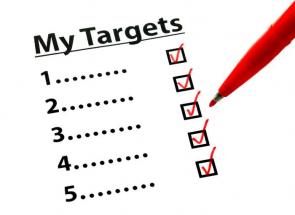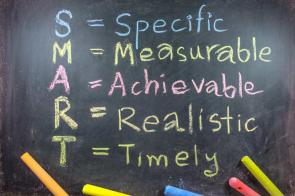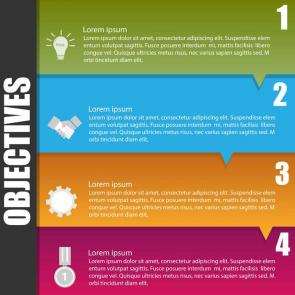A Small Question Bank for the Five Most Important Areas of an Interview
You need to ask questions about the five most important areas in an interview – these are “approaches to problem resolution,” “communication skills,” “motivation,” “interpersonal skills,” and “management/administration.”
Creating a Candidate Career Brief and Appraisal After an Interview
After a candidate proves suitable in the interview the next step is to create a written candidate report (If you are using an executive search firm to assist you, it should present you with a complete written report before you even see any candidates.)
Meeting Mutual Expectations in a Face-to-Face Job Candidate Interview
Even if you are able to find highly qualified candidates purely by working the phone, everything must still be verified by a face-to-face interview. A candidate is not guaranteed the job even if he or she has the right work experience, education, and excellent references. Just as important is the personality of the individual in question. This can best be experienced through a face-to-face interview.
Checklist for Job Candidate Screening over the Phone
When calling potential prospects, it is of great importance to be able to screen people, to separate the gold from the silver. It is very important to be good at screening, so that you avoid wasting your own time and, of course, the time of the people that you contact. Not all identified potential candidates will have equal credentials for the job. It is therefore very important to sort the right candidates from the wrong ones as early as possible in the process. This is of great interest not only for yourself, so you do not have to waste time on unproductive interviews, but also in the interest of the candidate, who also does not want to waste time.
Keeping Logs and Records of an Executive Search
At most major executive search firms, people use computerized systems, but many people at smaller firms still use manual systems such as the old-fashioned call sheets (also called contact sheets). The main objective with any system is that you record the information that you need and make the system work in the best possible manner. If you use the manual method as the log, you need to make sure that you use the same kind of call sheet for everyone. It is also of great importance that you only have one contact (person) for each call sheet. You then need to organize every contact sheet alphabetically. All contact sheets should remain in a binder assigned to the particular search.
How to Contact Recruiting Sources Over the Phone
Dealing With Secretaries and Switchboards
Switchboard operators are often the first line of inquiry when you call into a company. Some switchboard operators will talk freely about executives in their firm, while others will be very suspicious and might even transfer you directly to your target. Therefore, it is very important to be prepared for the worst. Also keep in mind that when you have made it through the switchboard, you can probe anywhere in a company for information. Be aware that you can get any information you want as long as you have what it takes: persistence, smarts, the right personality, and the requisite set of skills.
Some Strategies for Source Calling During an Executive Search
The Proposition
Before making any calls, it is important to make sure that you can do a good job selling both the job and the company. You must practice to the extent that you can do the pitch well and at the same time sound convincing. Do not start calling before you have it down right, as you get only one chance to make a first impression.
A Guide to Sourcing Candidates during an Executive Search Process
Sourcing is the process of locating names of possible candidates by referral from others (or themselves, when contacted). You generally have to contact many people to obtain names. Some of these may be found unsuitable quickly because they do not meet the job description requirements. Sourced names that seem to be suitable are added to a list of potential candidates for further investigation.
The Executive Search and ID Work
The executive search method requires you to find a small group of outstanding individuals who have interest in pursuing the opportunity that you are presenting to them. It is important that the search is comprehensive. You must utilize various sources of information, including all available published directories relevant to the search, as well as industry contacts. You should also conduct extensive original research.
A Headhunter’s Guide to Identifying Candidate Sources
It is important to prepare a formal task plan to guide yourself through the search for Mr. or Ms. Right. This guide serves as a road map in developing the proper approach to conducting research suitable to the particular assignment. The task plan need not be voluminous or complicated. Its purpose is to define the various activities and sources of information to be used in completing the research.
The ABCs of Behavior Modification Management
The multitude of problems that plague managers suggests that the traditional theories and techniques of management have not been effective. Unlike other theories of management, behavior modification principles and procedures were first developed in systematic and carefully controlled laboratory research.
The Methods of Head Hunting for Passive Candidates
To be a good hunter in the recruitment process, you must be both a good judge of character and a good researcher. Research is the backbone of the search process, involved in almost every step.
Classical Conditioning in Behavior Management
Although most managers will not directly employ the principles of classical conditioning, it is important for them to understand the process. First, it can help explain why punitive or disciplinary actions should be avoided or used with caution. Second, managers may find an understanding of classical conditioning useful in modifying their own behavior.
Writing Results-Oriented Job Descriptions
When writing results-oriented job descriptions, the first thing to consider is that you need to identify and state the result to be accomplished. For example, the desired result might be “Maintain Company Directory.” Now, to do this properly you need to do the following:
Some Case Studies on Adding a Reinforcer as an Incentive for Performance
Behavioral change experiments to reduce tardiness and absenteeism
Annual bonuses ranging from $24 to $40 proved ineffective in increasing punctuality and attendance in Ideal Standard S. A., a plant in Mexico City. Likewise, disciplinary interviews and one-day suspensions without pay failed to reduce tardiness. Jaime Hermann and his associates tested an incentive program over a period of 77 weeks with six chronically tardy semiskilled male laborers. The incentive system was simple: Each day that the worker punched in on time or earlier, he was given a slip of paper stating that he had earned approximately two pesos. At the end of each week, the men went to the Supervisor of Industrial Relations and exchanged their slips for cash. Statistical analysis revealed a significant decrease in tardiness when the incentive program was in effect.
Behavioral Rehearsal and Telecoaching
Behavioral rehearsal is a procedure in which trainees enact or practice the behavior being learned. A program con ducted by Kenneth Wexley and Wayne Nemeroff with 27 first-level managers in an urban medical center illustrates how behavioral rehearsal can be used in training supervisory skills.
Solving the Biggest Problem in Developing a Training Program
Too many sales personnel at Emery Air Freight were assuming that promises-such as, "Sure, we'll call you next time we have an urgent shipment"-were sales. A look at the actual sales statistics indicated a need for change. Ed Feeney knew the dangers of rushing into a training program before finding out exactly what behaviors needed changing: He had to know what was happening during the sales calls.
Behavior Change Programs and Their Evaluation
Evaluating your behavior change program is useful in many ways -- most obviously in providing information about the effectiveness of your program. It is vital in determining whether or not to continue the program.
Practical Observations on Using Goal-Setting as an Antecedent for Performance
In this strategy, an assigned objective or goal acts as an antecedent which elicits improved performance. The new higher level of performance is then reinforced. Gary Latham and Sydney Kinne demonstrated the effectiveness of goal-setting in a program conducted with 20 pulpwood-logging operators. Half of the producers were trained in goal-setting and half were not. Each week the trainer and producer determined minimum production goals. Using the goal-setting training, the producer converted the goal into cords-per-saw hand-hour and assigned it to the workers who directly controlled that production variable-the sawyers themselves. The sawyers were told that the goal was a minimum standard. They monitored their performance with tally meters. Both control and target producers recorded production, turnover, absenteeism, and injuries for their crews.
Practical Studies on Participative Goal-Setting
A logger project conducted by Gary Latham and Gary Yukl supported the notion that the nature of the supervisor-subordinate relationship is critical in the success of goal-setting programs.












